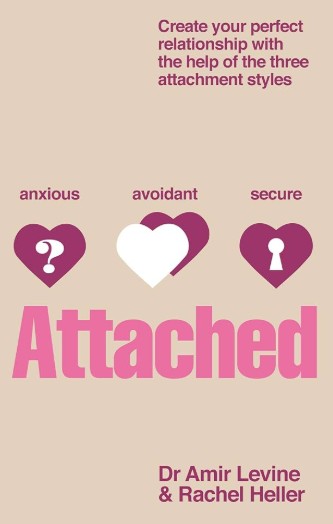
It was a full house on the second presentation of this PM Forum training workshop on “Coaching and Consulting Skills for Marketing and Business Development” in February 2022. Most of the professions – lawyers, patent attorneys, accountants, economists, engineers and actuaries – were represented. This post explores one of the key themes emerging – don’t jump to conclusions. The poll results are also shown below.
Don’t jump to conclusions – The changing expectations of M&BD
Many of us have been in our M&BD roles for some time. We’ve heard pretty much all the questions and challenges before – and we have a toolbox of techniques, experience and knowledge on which to draw for solutions. But the world keeps changing and we need to guard against relying on old solutions for new problems.
The Covid pandemic provided a brilliant opportunity for M&BD professionals to step into the limelight (firing line?) and demonstrate what we could deliver. In the remote working environment, our digital communications skills became crucial. And the new and changing hybrid environment presents more challenges.
But what’s also changing is how fee-earners perceive M&BD professionals – and their expectations of how we should work and what we should deliver. The delegates shared their thoughts on what they perceived as fee-earners’ changing expectations of M&BD:
- Integrated rather than silos – Fee-earners expect us to work seamlessly with others in the M&BD team regardless of our specific expertise, function, sector or territory. And also in a more integrated way with other support functions such as finance, HR and technology as well as fee-earning departments. They expect M&BD professionals to have a comprehensive knowledge of the firm’s strategic aims so that everything is aligned and integrated.
- Commercial rather than technical – Like our fee-earners, to some extent our technical marketing and sales technical knowledge is taken for granted. They know we are subject matter experts (SMEs) in marketing and business development. What they want to see is us demonstrate business acumen and commercial skills to deploy those technical skills to achieve performance improvement and financial results.
- Market rather than marketing knowledge – Our fee-earners also expect us to have a deep knowledge of their clients, sectors and markets. They expect us to have data to back up new insights into their clients’ emerging needs and opportunities.
- Challenge rather than acquiescence – Fee-earners no longer want nodding-dogs who agree with everything they say. They want constructive challenge and alternative perspectives. Albeit delivered respectfully. M&BD people need to be brave enough to speak out when they feel their fee-earners are wrong.
- Innovative rather than repetitive – Fee-earners want us to be innovative and to help them to differentiate. They are less interested in simply repeating what has been tried before. We need fresh and bold ideas to address new and emerging challenges.
- Proof rather than promise – Fee-earners expect us to support our proposals with data and to demonstrate our expertise and track record with solid examples. It’s no longer enough simply to say what we might achieve – we need to provide evidence.
- Pro-active rather than reactive – Instead of responding to requests and providing support, fee-earners expect M&BD to provide insights, to drive strategy and to identify opportunities. As one delegate commented “It’s less about fancy events to wine and dine clients, it’s more about a sector and industry focus driving focused business development activities”
Don’t jump to conclusions – Establish a strong relationship first
Several delegates expressed a desire to create more engagement and improve their powers of influence and persuasion with fee-earners and stakeholders. But before you can engage, influence, persuade, coach or consult you need to establish a good relationship – or at least have an emotional connection and some rapport and trust.
So empathy is the starting point. M&BD professionals can’t assume that they know what each fee-earner is like or knows or wants. Each fee-earners might have different approaches, preferences and motivators. So we need to take time to learn about our fee-earners.
We ask questions to build empathy. Even the toughest negotiators – such as FBI hostage negotiators dealing with some of the most challenging people – start with empathy as shown in the FBI’s Crisis Negotiation Unit’s Behavioural Change Stairway Model (BCSM) for negotiation:
- Active Listening: Listen to their side and let them know you’re listening
- Empathy: Understand where they’re coming from and how they feel
- Rapport: Empathy is what you feel. Rapport is when they feel it back. They start to trust you.
- Influence: Now that they trust you, you’ve earned the right to work on problem-solving with them and recommend a course of action
- Behavioural Change: They act
Don’t jump to conclusions – Listen to understand, not to respond
Research suggests that we only retain around 10%-25% of what we hear. So we have to really pay attention to glean all of the meaning when talking to someone. Often, we listen to respond rather than really understand what the person is communicating.
Typically, M&BD conversations with fee-earners are time constrained. We are expected to diagnose the problem and come up with a solution as quickly as possible. This may hamper our ability to really pay attention and listen carefully to what is being said.
The danger is that in our effort to meet this unrealistic expectation, we don’t really listen to what they are saying. To take time to probe their assertions and beliefs. To seek data and evidence to back up or refute their views. To listen to what they may express in the pace, pitch or tone of their words.
While others are speaking, our minds might pick up on a word or phrase and then our brains focus in and start thinking about that topic. So we stop listening to what else they are saying. And we inadvertently stop the productive exchange prematurely – in our efforts to show we understand their challenge and have a solution.
The result is that fee-earners may feel that they have not been heard properly. Or that they have not been fully involved in identifying the problem and considering the options to address the issue. If fee-earners do not feel they have contributed to the diagnosis and solution, they may be reluctant to commit time and resources to implementation. We will have failed to gain their trust, agreement, buy in and commitment.
We need to give ourselves and the fee-earners time to talk and listen properly. To ask questions, to clarify and challenge. To explore surface wants and hidden needs. To get to grips with the underlying issue – not just the symptoms of the problem. We need to obtain all the relevant information before we start thinking about co-creating a solution.
Resources on active listening skills:
Active Listening (Video) (kimtasso.com)
Coaching skills – the importance of active listening – Kim Tasso
impact of Covid on listening while selling (kimtasso.com)
How can I improve my active listening skills? – Kim Tasso
Don’t jump to conclusions – What are they REALLY trying to achieve?
In a consulting scenario exercise at the workshop, it became apparent that M&BD professionals can sometimes be too keen to jump to conclusions and solutions before properly analysing both the presenting issue and the underlying issue.
In their keenness to help, they skipped the detailed diagnosis and other stages of the problem-solving process and jumped to solutions. They offered ideas and options without fully involving the fee-earners and seeking their views on what might or might not work. Without the fee-earners being involved in the analysis, diagnosis and option generation phases there is a risk that they will not be engaged and fail to buy into or be motivated to implement the chosen strategy.
M&BD people have to examine and challenge their assumptions – to avoid offering old solutions to new or nuanced problems. We must guard against having fixed ideas or being closed about how to tackle new situations in a new, more effective way. It’s hard to break out of old behavioural habits.
Strategic thinking – Audits, assumptions and alignment (kimtasso.com)
Before your set your goals – check your limiting assumptions (kimtasso.com)
A simple model to challenge assumptions is PLDI:
Probe – Ask questions to explore and understand the issue
Listen – Really listen to what is said and any underlying needs or wants or issues
Data – Use data to verify or dispute what is being presented as the issue
Identify – Consider what has been said and what the data reveals to identify the real issue to be addressed
Don’t jump to conclusions – Just because you are coaching, consulting and strategic doesn’t mean you’re off the implementation hook
Despite the fact that you have repositioned yourself and earned the right to coach and consult, fee-earners will still expect you to play a major role in the implementation of any strategies, campaigns or initiatives you help them formulate.
There are various ways to tackle this resourcing issue:
- Some firms are large enough to structure their M&BD teams into advisory and tactical teams. For example, a Business Development Manager or Sector Manager will lead the effort to create strategies and plans and draw on the resources of BD assistants or functional specialists (e.g. CRM managers, Event managers, Digital marketing managers) to manage the projects and produce the output. Other firms may have marketing operations teams or operational hubs who allocate the implementation work amongst themselves
- Some may invest in developing the Executive Assistants (EAs) and Personal Assistants (PAs) within fee-earning teams to take over much of the tactical and logistical work to organise events, build proposals or curate content
- Some firms take advantage of the Government’s Apprenticeship schemes which provide junior M&BD professionals with a substantial part of their training costs being covered by the state. Marketing Manager Apprenticeship – a Level 6 Qualification (kimtasso.com)
- Increasingly, firms are outsourcing implementation work by retaining external agencies to do the lion’s share of content development, emailing campaigns, event management and social media management. Freelancers and virtual assistants are another possible resource
- Others might rely on resources beyond the marketing team and draw on help from University student secondment programmes or Kickstarter schemes
Summary of previous coaching and consulting skills workshop Coaching and consulting skills for M&BD workshop (November 2021) (kimtasso.com)
Delegate takeaways
At the end of the session, the delegates indicated their key takeaways from the session:
- Take a step back.
- Reframe how you perceive “difficult” people
- Don’t make assumptions
- Reflect
- Ask questions
- Listen actively
- Don’t rush to provide solutions quickly
- Process before solution
- The power of curiosity
- Change management
Poll Results
What sector are you from?
- 63% Legal
- 25% Consultancy
- 6% Accountancy
- 6% Other
How would you rate your relationships with fee-earners?
- 6% Poor
- 31% Average
- 56% Good
- 6% Excellent
The area I most need to improve to start coaching and consulting:
- 44% How I am perceived
- 13% Technical skills
- 25% Knowledge
- 19% Soft skills
At what stage in the relationship can you start to coach and consult?
- 7% Acknowledgement
- 7% Understanding
- 20% Acceptance
- 33% Respect
- 33% Trust
What’s the biggest challenge when developing relationships with fee-earners?
- 7% Stubbornness
- 7% Anger/arrogance
- 33% Fixed views/closed to new ideas
- 47% Their lack of time
- 7% Something else
Which area of the coaching process presents the biggest challenge for M&BD?
- 7% Identify vision, challenges and goals
- 7% Explore the situation (may involve assessments)
- 7% Develop and consider different strategies and option
- 0% Agree short and medium term plans
- 0% Signpost and provide relevant learning resource
- 79% Ensure there is the motivation and ability to agreed activities
- 0% Assess and support progress
Which do you think is the most important coaching skill?
- 0% Problem solving and idea/option generation
- 50% Questions and listening
- 14% Providing feedback
- 14% Guiding and teaching
- 21% Goal setting and motivation
How would you rate psychological safety at your firm:
- 6% Excellent
- 56% Good
- 38% OK
- 0% Poor
Which consulting skill do you most need to develop?
- 13% EQ/Emotional intelligence/relationships
- 19% Analysis and diagnosis
- 13% Commerciality
- 6% Collaboration/team work
- 38% Influence and persuasion
- 0% Problem-solving and creativity
- 6% Creativity and generating solutions
- 6% Project planning/management
Which part of the consulting process is the most challenging:
- 13% Entry
- 6% Contracting
- 56% Diagnosis
- 25% Intervention
- 0% Closure
When presenting ideas and solutions, what is the biggest challenge?
- 13% Achieving consensus/buy in
- 6% Managing disagreement between partners/teams
- 44% Dealing with fixed views
- 13% Managing involvement with other functions/teams
- 6% Being confident of the outcome/results
- 13% Justifying the investment
- 6% Cultural and structural issues
Recommended reading list on coaching and consulting skills
Coaching skills resources
Soft skills: Introduction to coaching – Three frameworks (kimtasso.com)
Coaching skills – the power of questions (kimtasso.com)
Coaching skills – the importance of active listening – Kim Tasso
Emotional contagion, delegation, coaching and team meetings (kimtasso.com)
Book review: Digital Body Language – How to build trust by Erica Dhawan (kimtasso.com)
Improve learning effectiveness – Using Kolb’s learning styles (kimtasso.com)
The art of giving feedback – top tips (kimtasso.com)
Coaching models – book review of Stephen Gibson’s book (kimtasso.com)
Helping people change: Coaching with compassion (kimtasso.com)
Personality assessment as part of the coaching and development process (kimtasso.com)
The GC Index® – a Leadership and Board Assessment tool (organimetric) (kimtasso.com)
Consulting skills resources
Consulting skills 1 – Book review: The Art of Consultancy (kimtasso.com)
Consulting skills 2 – Book review: Flawless Consulting by Peter Block (kimtasso.com)
Consulting skills 3 – Book review: Humble Consulting by Edgar h Schein (kimtasso.com)
Change management resources
ready to change? remember the change process (kimtasso.com)
Your personal transition – Endings, neutral zone and new beginnings (kimtasso.com)
Building Resilience – Regulation, Reframing, Relationships and Reflection (kimtasso.com)
Dealing with resistance to change (kimtasso.com)
Change management and Employee engagement (kimtasso.com)
thoughts on managing change and leadership (kimtasso.com)
Change management book – Switch (Chip & Dan Heath) (kimtasso.com)
Change management – Change Catalyst book review by Kim Tasso
Book review: Neuroscience for organizational change by Hilary Scarlett (kimtasso.com)
change management and organisational change (kimtasso.com)









